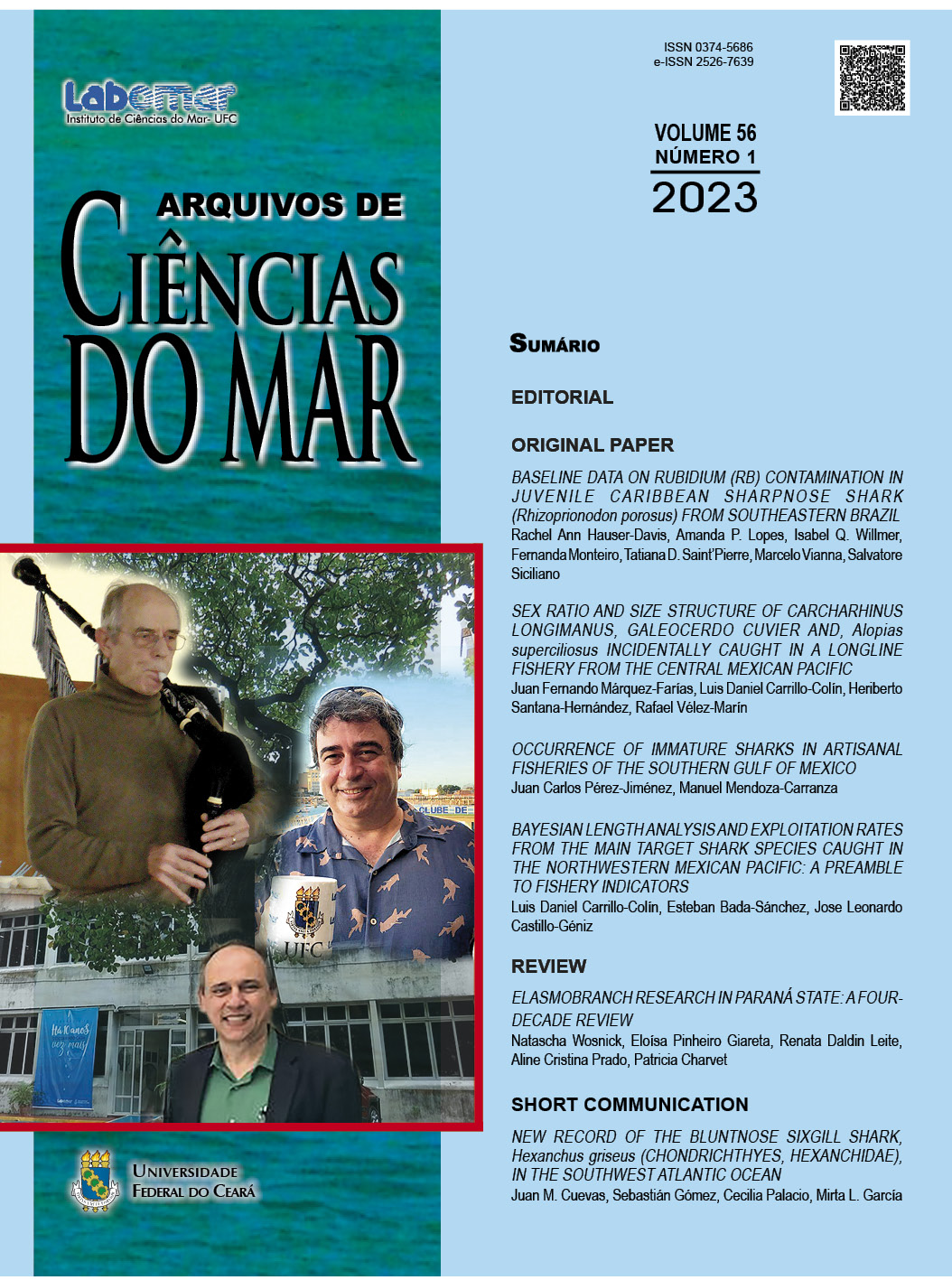IMPLICAÇÕES TAXONÔMICAS DO RECURSO “RAIA” NOS DESEMBARQUES DA PESCA COMERCIAL DE ARRASTO DE FUNDO NA PLATAFORMA CONTINENTAL SUL DO BRASIL
Taxonomic implications of the resource “ray” in commercial landings of bottom trawl fisheries in Southern Brazil
Abstract
A survey directed to the study of batoid species landed by the bottom trawl fishing fleet of Rio Grande - RS, Brazil, was carried out during the years 2001 to 2015. The aim of the study was to assess the diversity of the resource “rays” on the southern shelf of Brazil, an important area for reproduction of this group. The knowledge of the taxonomic structure of this group is crucial for conservation purposes. A total of 2360 specimens were recorded, of which 15 taxa were identified to species: Rioraja agassizii (n = 617; 26,1%), Sympterygia bonapartii (20,4%), Atlantoraja castelnaui (14,8%), Atlantoraja cyclophora (12,7%), Zapteryx brevirostris (11,8%), Sympterygia acuta (4,4%), Atlantoraja platana (1,9%), Dasyatis hypostigma (1,4%), Pseudobatos horkelii (0,6%), Myliobatis goodei (0,5%), Gymnura altavela (0,3%), Psammobatis extenta (0,2%), Psammobatis rutrum (0,2%), Psammobatis lentiginosa (0,1%), and Myliobatis freminvillei (0,04%). There was a predominance of females (1258; 53,3%) over males (n = 666, 28,2%) and a considerable number of immature sizes (n = 545; 23,1%). Pair trawling was the most used trawl (82%) and was more likely to capture medium to large sized species.
Keywords: Biodiversity, By-catch, Species conservation, Elasmobranch, Overfishing.
Published
Issue
Section
License
Copyright (c) 2024 Arquivos de Ciências do Mar

This work is licensed under a Creative Commons Attribution 4.0 International License.
1. Proposta de Política para Periódicos de Acesso Livre
Autores que publicam nesta revista concordam com os seguintes termos:
- Autores mantém os direitos autorais e concedem à revista o direito de primeira publicação, com o trabalho simultaneamente licenciado sob a Licença Creative Commons Attribution que permite o compartilhamento do trabalho com reconhecimento da autoria e publicação inicial nesta revista.
- Autores têm autorização para assumir contratos adicionais separadamente, para distribuição não-exclusiva da versão do trabalho publicada nesta revista (ex.: publicar em repositório institucional ou como capítulo de livro), com reconhecimento de autoria e publicação inicial nesta revista.
- Autores têm permissão e são estimulados a publicar e distribuir seu trabalho online (ex.: em repositórios institucionais ou na sua página pessoal) a qualquer ponto antes ou durante o processo editorial, já que isso pode gerar alterações produtivas, bem como aumentar o impacto e a citação do trabalho publicado (Veja O Efeito do Acesso Livre).

